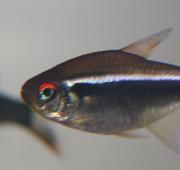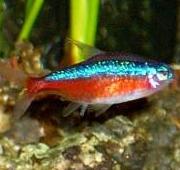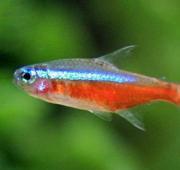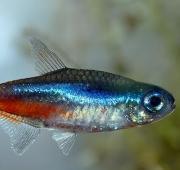 The tetra is a small and colourful fish native to the freshwater rivers and streams of South America and Africa. The tetra is one of the most well known and popular freshwater tropical fish kept in tanks and aquariums all around the world.
The tetra is a small and colourful fish native to the freshwater rivers and streams of South America and Africa. The tetra is one of the most well known and popular freshwater tropical fish kept in tanks and aquariums all around the world. There are around 150 known species of the tetra fish native to the clearwater streams and slow-moving rivers of both Africa South America. There are more than 100 different species of the tetra in Africa alone and even more in South America. The two groups of fish are classified as the characidaes (the tetra of South America) and the alestiidaes (the tetra of Africa).
There are around 150 known species of the tetra fish native to the clearwater streams and slow-moving rivers of both Africa South America. There are more than 100 different species of the tetra in Africa alone and even more in South America. The two groups of fish are classified as the characidaes (the tetra of South America) and the alestiidaes (the tetra of Africa).


Due to their small size, tetras are prey to many predators in their watery world. Larger fish, eels, crustaceans and invertebrates all prey on the tiny tetra which is often easy to spot due to it's brightly coloured body. When a tetra feels it is in in danger, it will often try to find something to hide in or travel into water that is slightly darker so that the tetra is harder to spot.
Tetras live in schools of many tetra individuals, sometimes in the hundreds, in order to help to protect each other and to find food. Tetras kept in tanks should be kept with at least 6 or 7 other tetras. Male tetras tend to be smaller in size than the female tetras.
Tetras breed in pairs that spawn together for about a year. Female tetras lay an average of 130 eggs usually on a leaf in the water, which are then fertilised by the male tetra. The baby tetra are called fry and hatch within a couple of days.

